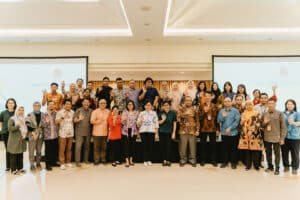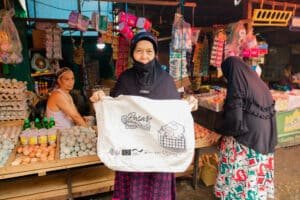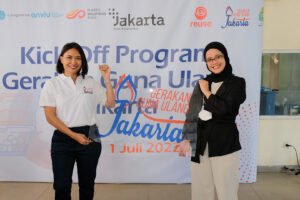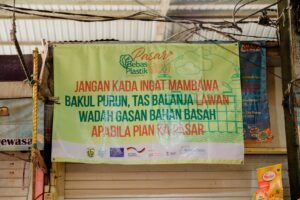Plastic waste continues to be a problem that has not been resolved to this day. The amount of plastic waste is predicted to continue to increase, especially multilayer plastic waste (sachet packaging). Multi-layer plastic sachet packaging used in various household products, from cleaning fluids, personal care to food and drink packaging, has caused serious and very dangerous dangers to the environment due to the very low recycling rate and post-consumer waste value compared to with other packaging such as PET (Polyethylene Terephthalate) bottles.
Based on the 2020 Greenpeace report entitled “Throwing Away The Future: How Companies Still Have It Wrong on Plastic Pollution Solutions”, as many as 855 billion sachets were sold on the global market this year, and Southeast Asia is a region that holds a market share of around 50%. In 2027, it is predicted that the number of sachet packages sold will reach 1.3 trillion. You can imagine how much more sachet waste will be generated if its use increases every day.
In terms of product marketing, sachet packaging is very profitable, because it has the ability to protect products very well and makes it easier for producers to innovate their products. However, sachet packaging plastic is a type of multilayer plastic which is very difficult to decompose.
Sachet packaging is formed from more than one type of polymer and has 3-4 layers. The layer consists of clear plastic, aluminum foil, a product image layer and a laminated paper layer. These stacked layers cause single-use plastic packaging to be separated. This is because the raw materials used come from materials that have different melting points, so they are not easy to melt.
Sachet packaging is a type of multilayer plastic which is very difficult to recycle. Sachets are also a type of plastic waste that is actually less liked by recycling entrepreneurs, so they are usually rejected because they are difficult to recycle
This type of multilayer plastic waste is also difficult to recycle. Recycling entrepreneurs choose not to use this type of waste. The low number of multilayer plastic waste recycling industries causes accumulation. As a result, the negative impact of multilayer plastic buildup threatens environmental damage and human health.
The negative impact of physical multilayer plastic buildup is the formation of microplastics. Microplastics are plastic or fiber particles measuring < 5 mm. Microplastics have 2 types, namely primary and secondary. Multilayer plastic will produce secondary microplastics due to the degradation process of the material. Microplastics that have spread in the environment can affect human health.
Considering the current sachet waste problem, waste observer, Sri Independensari, said that producers must be responsible for managing the sachet waste they produce. “We should refer to Article 15 of Law No. 18 concerning Waste Management. “It states that producers must be responsible for the waste they produce from the products they make,” said Sri.
The Ministry of Industry (Kemenperin), which has the authority to grant production permits, is seen as the party that should share responsibility. “Supposedly, when producers ask for production permits, the Ministry of Industry must first ask for some kind of proposal from industry regarding plans or strategies after their goods are consumed,” he said.
This strategy must be able to answer the solution to the problem of potential sachets that will be produced by the product. If not, the nightmare of the world being flooded with plastic waste in 2027 will become a reality.








